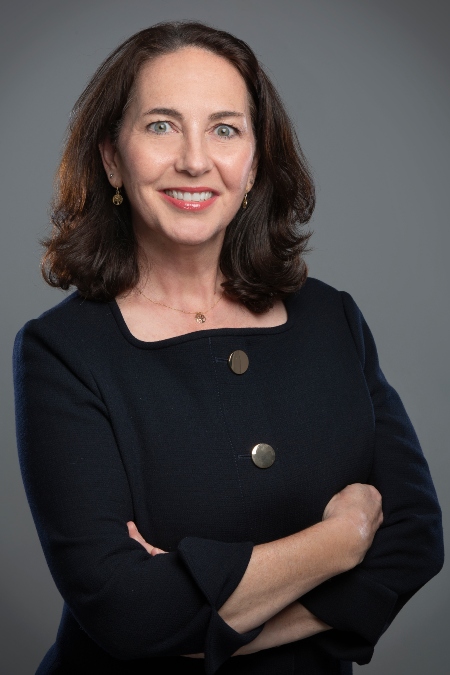
Have you felt “lonely” running your business? Who do you learn from, or who can you turn to for advice? How best to navigate challenges thrown your way? Are you making the right decisions? This is where mentorship can be a game-changer for female entrepreneurs, offering invaluable business guidance, support and wisdom. Mentorship offers tailored guidance and support that can propel female entrepreneurs toward their goals. Whether seeking a mentor or becoming one, these relationships can be transformative, creating lasting impacts on both personal and professional levels.
With mentorship, you can gain:
- Confidence and Clarity: Helps clarify vision and boost confidence for bold steps.
- Skill Development: Shares expertise to grow your business.
- Networking Opportunities: Opens doors to valuable contacts.
- Emotional Support: Offers empathy and understanding on a sometimes isolating journey.
Through WENStart, WEN’s Mentorship Program, our objective was to create positive real-life impact for our mentees on their business and themselves.
Vanessa Misso-Venness shared how her mentor helped her with her product and her self-esteem. “She helped me formulate a coaching package for my clients, which I’ve since offered and she has been my cheerleader, helping me appreciate my own worth as a business owner!”
Nicole Chabot shared how her mentor’s empathy helped her navigate difficult decisions: “I think it was her continual empathy. I was agonizing over pricing and she said it was always difficult and you just needed to decide. It helped me make decisions and go for it more than otherwise.”
Ruchi Bhave benefited from her mentor’s practical advice: “My mentor asked me not to spend money on marketing. Since then I have evaluated every marketing opportunity that has come my way. I have strived towards collaborations and barter system.”
Mentoring also brings benefit to both the mentor and mentee. As Jessica Yuen found, “mentor and mentee both learn a lot about their (respective) businesses and gain from each other’s experiences”.
So how does one get the most out of a mentoring relationship? We asked our graduates from the WenStart program and collated their top tips:
- You don’t need to stick to just one mentor for the long term. As you and your business progresses, re-evaluate what your needs are and take on different mentors.
- You also have the choice to change mentors if you find that your current mentor is not a good fit for you.
- You just need to speak up and end the mentoring relationship politely.
- Come prepared to not just maximise meeting time but also respect your mentor’s time. Ruchi prepared agendas in advance, wrote all her questions down and shared them on a Google Drive with her mentor.
- You can give back too! Nicole ended each mentoring session by giving a book recommendation to her mentor.
- Go into the mentoring relationship with a growth mindset. Vanessa Misso-Veness had wise words about the mentoring mindset: “To choose to be mentored means to be open to receiving and learning”.
Mentorship is a powerful tool for unlocking potential and driving success. Consider joining or becoming a mentor for WENStart to inspire and support the next generation of women entrepreneurs.

Anxiety is a natural part of life, but when it becomes overwhelming, it can take a toll on our mental and emotional well-being. Whether it’s juggling work responsibilities, managing relationships, or coping with life’s uncertainties, finding effective ways to manage anxiety is crucial for women’s mental health. In this blog post, we’ll provide seven practical strategies to help women alleviate its grip and find inner calm.
Practice Deep Breathing:
Deep breathing exercises are a simple yet powerful way to calm the mind and body. When anxiety strikes, take a moment to focus on your breath. Inhale deeply through your nose, allowing your lungs to fill with air, and exhale slowly through your mouth. Repeat this several times, focusing on the sensation of your breath filling your body. Deep breathing activates the body’s relaxation response, helping to reduce anxiety levels and promote a sense of calm.
Engage in Regular Physical Activity:
Physical activity is a natural stress reliever and mood booster. Regular exercise releases endorphins, the body’s feel-good chemicals, and helps to reduce levels of stress hormones. Whether it’s going for a walk, practising yoga, or dancing around your living room, find an activity that brings you joy and make it a regular part of your routine. Aim for at least 30 minutes of moderate exercise most days of the week to reap the full benefits for your mental and physical well-being.
Embrace Mindfulness and Meditation:
Mindfulness and meditation are powerful practices for cultivating present-moment awareness and reducing anxiety. Take time each day to sit quietly and focus on your breath, allowing your thoughts and feelings to come and go without judgement. You can also try guided meditation apps or mindfulness exercises that help you stay grounded in the present moment. With regular
practice, mindfulness and meditation can help you develop a greater sense of calm and resilience in the face of anxiety.
Establish Healthy Habits:
Taking care of your overall well-being is essential for managing anxiety. Ensure you prioritise self-care activities that nourish your body, mind, and spirit. Get enough sleep each night, eat a balanced diet rich in fruits, vegetables, and whole grains, and limit your intake of caffeine and alcohol, which can exacerbate anxiety symptoms. Make time for activities that bring you joy and relaxation, whether it’s reading a book, taking a bath, or spending time outdoors in nature.
Seek Support from Others:
Remember that you don’t have to navigate anxiety alone. Reach out to trusted friends, family members, or seek professional help if needed. Talking about your feelings and concerns with others can provide comfort and support, and offer valuable perspectives on managing anxiety. Consider joining a support group or seeking therapy to learn additional coping strategies and tools tailored to your specific needs.
Set Worry Time:
Allocate specific time during the day to address worries and concerns. This helps prevent constant rumination and allows you to focus on finding solutions during designated periods, rather than letting worries consume your entire day. You may find that you don’t need to use your worry time all the time.
Use the ‘Right Now’ Skill:
When feeling overwhelmed, use the ‘Right Now’ skill to ground yourself in the present moment. Take a moment to notice and name five things you can see, four things you can touch, three things you can hear, two things you can smell, and one thing you can taste. This technique helps shift your focus away from anxious thoughts and brings you back to the present, reducing distress and promoting calm.
While anxiety may be a part of life, it doesn’t have to control your well-being. By implementing these seven strategies – practising deep breathing, engaging in regular physical activity, embracing mindfulness and meditation, establishing healthy habits, seeking support from others, setting worry time, and using the ‘Right Now’ skill – you can reduce anxiety and cultivate a greater sense of calm and resilience. Remember, it’s important to be patient and kind to yourself as you navigate your journey toward finding inner peace and well-being.
Also, consider joining our Decider 32 Skills course to learn more strategies and tools for effectively managing anxiety and promoting mental well-being. You can find more information about the course here: https://positivewellbeinghk.com/proactive-mental-health/32-skills-course/
Blog written by Positive Wellbeing Limited

A. Getting away from a failing company
B. For more total (including incentive and bonus) money
C. Lack of career growth and development, often blocked by a bad boss
D. More suited geography or better location
E. For a better fit with their skills – discovering and banking on their strengths
The correct answer is C, with a large body of evidence from management research going back to at least 1990 that suggests we’re very sure of this.
Money is not the major reason why employees decide to leave their employers unless their compensation is far less than what can be earned elsewhere. When they are paid within a range that meets or exceeds their minimum threshold, salary is not a main driver for people to seek other job opportunities. Everyone has a different threshold.
What typically drives employees to look elsewhere is getting away from a “bad” boss, especially one who is seen as blocking advancement and achievement and not listening or delegating effectively.
People also move on because they want opportunities to advance, learn, grow and be noticed when they do that.
What does a “bad” boss look like?
Several boss behaviors that motivate employees to leave include:
- Lack of attention, recognition and feedback
- Job demands that produce excessive or undesirable constraints on the individual, such as role ambiguity, conflict, and overload
How to foster employee career growth and development
Take a structured approach to employee growth and development. It doesn’t have to take up a lot of managers’ time or cost a lot of money because, ideally, career development should be driven by the employee, supported by the manager, and incorporated into daily work.
For example, meet employees individually to ask about their career aspirations. This should be done separately from a performance review. Ask them to brainstorm what skills, knowledge or experiences they need in order to achieve their career goals. Together, explore how the organization can support their development needs, first largely from job assignments, followed by mentoring and then formal training. Mutually agree upon a development plan. Review it quarterly or twice yearly.
How to provide sufficient attention, recognition and feedback
- Meet your direct reports individually (try once a week) to discuss priorities, tasks and how they’re doing overall
- Review progress regularly. Depending on the activity you’re monitoring, “regular” can mean daily, weekly, monthly, quarterly or annually
- Notice when they’re struggling and provide support
- Notice when someone did something well and recognize them for it. For some people, a simple “Thank you, I noticed you did X. I know it was difficult so well done” is enough to send them over the moon and motivate them to go above and beyond. Others prefer public recognition in front of peers
- Give feedback promptly. Don’t wait days or weeks after an incident occurs
- Deliver feedback in a candid yet diplomatic manner so that you correct ineffective behavior while still maintaining positive working relationships
- Listen to employees’ opinions. When you implement their ideas it skyrockets employee engagement. When you don’t, explain why so that they feel understood and that their ideas were considered carefully
How to manage role ambiguity, conflict and overload
- Set clear roles, responsibilities, goals and objectives. This is less about having rigid job descriptions and more about clearly, proactively communicating so that team members know what tasks need to be done, by whom and why
- When conflicts arise between employees, address them in a prompt, fair manner and delegate effectively, ensuring the team is not. is not overloaded.
Challenges of small business owners
As a small business owner you may find it challenging to implement these practices because you’re wearing many different hats and may be overworked yourself. However, remember that your team exists to help you build the business. When you invest time and energy in becoming a “good boss” – one that inspires others to go above and beyond to achieve outstanding performance – that is what enables you to take your business to the next level!
Author:
Bernice Lee is a multiple award-winning coach who helps business professionals around the world to be more happy, fulfilled and successful in their work. Before starting her own company in 2013 as a coach, corporate trainer and speaker, she worked as a human resources manager in General Mills and Fidelity Investments in the United States and Hong Kong. She holds a bachelor’s degree in sociology from Yale with a specialization in organizational behavior and a masters degree in human resources management from Cornell. Bernice splits her time between Hong Kong and Canada. www.coachbernice.com

Introduction: Embracing the New Year with a Fresh Style
The Chinese saying goes “The planning of the year starts from Spring” (一年之計在於春). As the Year of Dragon has begun, it brings a unique opportunity for women entrepreneurs in Hong Kong and Asia to refresh their personal style. In this blog, I am going to share the significance of revamping one’s image for the new year, emphasizing the importance of aligning personal brand with outfits, accessories, and colors.
Why Refreshing Personal Style Matters
The start of a new year signifies growth and change. Refreshing your personal style is more than a cosmetic update; it’s a powerful signal to the world that you’re ready for new opportunities. For women entrepreneurs, a renewed image can boost confidence, stimulate creativity, and set the stage for a successful year ahead.
The Impact of Personal Branding on Your Image
Before delving into wardrobe choices, understanding personal branding is crucial. Your personal brand is an extension of your passion, purpose, values, and unique qualities. Aligning your style with your personal brand creates a cohesive and impactful impression, laying the foundation for success in business and beyond.
Dressing According to Undertone and Body Shape
Picking the right colors and outfits based on undertone and body shape is a game-changer. For warm undertones and an hourglass figure, earthy tones and fitted wrap dresses enhance natural beauty. Explore cool blues for medium-toned, pear-shaped bodies, creating a balanced silhouette. Tailored sheath dresses flatter those with neutral undertones and rectangular bodies. Deep burgundies and flowing tops accentuate deep undertones and apple-shaped figures.
Decoding the Significance of Red
During Chinese New Year, red takes the centre stage, symbolizing luck and prosperity. However, not all reds suit everyone. Understanding your undertone, profession, and personal brand is key. The right shade of red, whether fiery for warm undertones or burgundy for cool undertones, can enhance your unique style and make a powerful statement.
Selecting the Perfect Shade of Red
As an image stylist and color specialist, I always advise clients that their journey to finding “the perfect red” begins with knowing their undertone. Warm undertones lean towards vibrant reds, while cool undertones shine in burgundy or cherry hues. Experimenting with different shades ensures you discover the red that aligns with your personal brand, leaving you feeling confident and empowered.
Festive Yet Professional Outfit Ideas
Chinese New Year festivities call for a balance between festivity and professionalism – this is particularly important for women entrepreneurs who need to project a powerful image and demonstrate the right set of energy when they run their businesses. A tailored red blazer paired with black trousers or a red dress with subtle gold accessories strikes the perfect equilibrium. Incorporating traditional elements like embroidery or gold accents adds cultural flair without compromising sophistication.
Embracing Traditional Chinese Accessories
For an extra touch of cultural significance, consider incorporating traditional Chinese accessories. Qipao or Cheongsam dresses radiate elegance, while jade jewelry brings luck and protection. If not jade, peals are always a great pick to elevate the elegance feeling. Red envelopes (Hongbao), tassels, knots, and floral hair accessories contribute to a festive yet meaningful ensemble.
Confidence is Your Best Asset
In wrapping up, the key takeaway is to know and embrace your personal brand, special qualities, and facial features. Confidence is the ultimate accessory, and showcasing your best self involves aligning your style with your unique identity. As you usher in the Chinese New Year, let your renewed image reflect not only cultural significance but also the empowered woman entrepreneur that you are.
This simple guide aims to share some quick tips for women entrepreneurs who run businesses to navigate the new year with style, confidence, and cultural relevance. May the upcoming festivities bring success, prosperity, and a renewed sense of self.
Author:
Tracy Ho
Personal Branding & Image Consultant, Executive Presence Coach
CEO & Founder, Frame & Fame Personal Branding
2024 February
Website: www.frameandfame.com

WEN chairwoman was featured on the HK Living Article on their Sep-Nov 2023 article issue.
Sharon McEneff (chairwoman) spoke about her role in WEN and how they can help the new and established business owners promote their events. She also spoke about WEN membership and mentorship opportunities. Read more about her interview with here.








